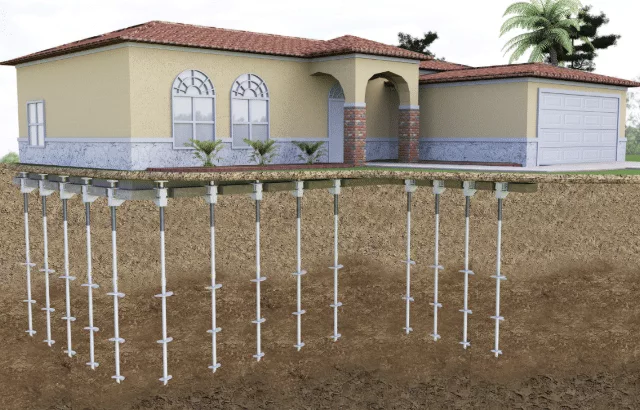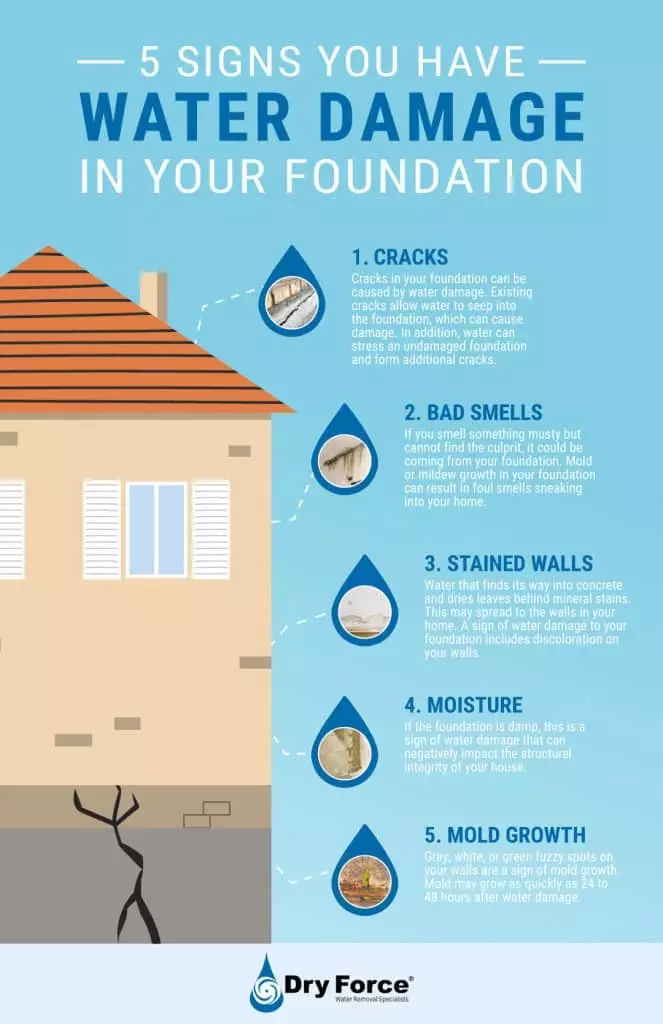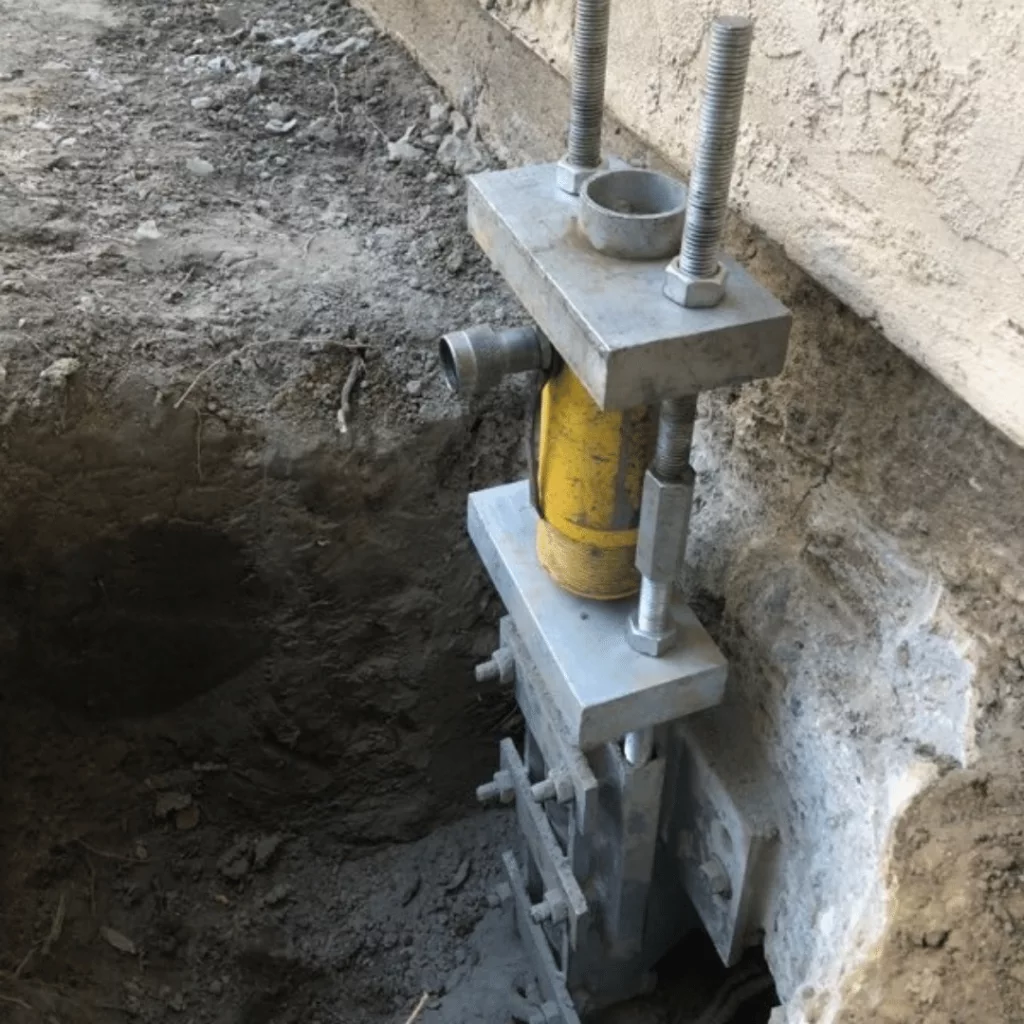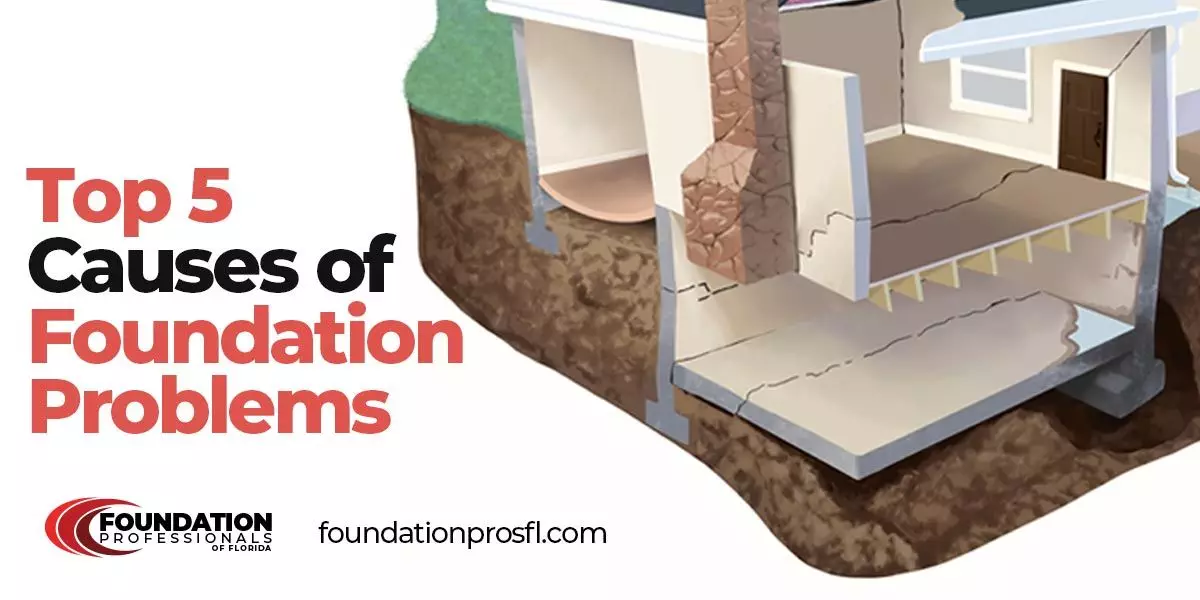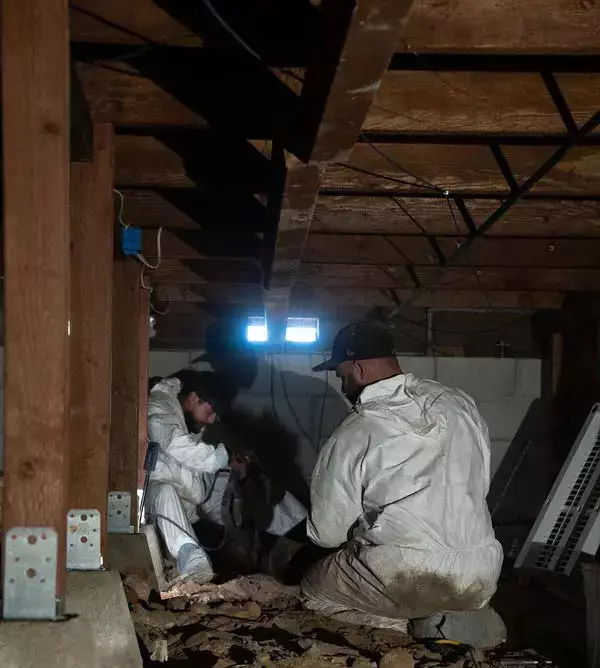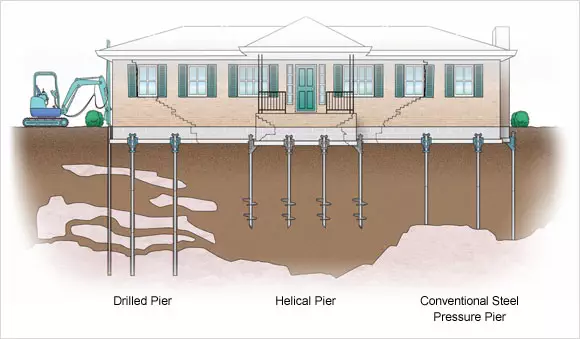
What Engineers Can Teach Us About Push Piers
Ever wondered what keeps a massive building standing strong against the elements? Engineers have a few tricks up their sleeves, like push piers! These nifty devices can help save your home or building from sinking into the ground. If your foundation is feeling shaky, push piers might just be the solution you need. They’re reliable, powerful, and can work wonders on your property.
Foundation repair isn’t just about fixing cracks. It’s about ensuring your home stays safe and secure. Steel piers and other settlement solutions provide structural support and prevent future problems. If you’ve noticed signs of foundation settlement, understanding how soil stabilization or basement underpinning work can be crucial. Believe it or not, the secrets engineers use are more approachable than you might think!
Ready to learn from the pros and protect your home? Discover how push piers and other smart methods can transform your space. Dive in and uncover the engineer’s insights that can make all the difference!
Within the post
Understanding Push Piers
How Push Piers Work
Push piers are like strong metal rods. They’re used to push deep into the ground. But how do they work? Well, they transfer a building’s weight to the stable soil below. Imagine you have a tall stack of books that keeps falling over. By placing a solid object under the stack, you stabilize it. Push piers do a similar job for your home. This method is crucial when the topsoil is too weak to hold the foundation’s weight properly. By reaching deeper layers of soil, they find firm ground capable of supporting the structure.
When to Use Push Piers
Push piers are ideal for many foundation settlement issues. You might wonder, “When should I use them?” If you notice cracks on walls or doors that won’t close properly, it could be a sign. These problems often happen because the ground beneath your home is shifting. Push piers stabilize the foundation and stop further movement. They’re especially helpful if your house is sinking or tilting. Experts suggest using them when other solutions, like slabjacking, aren’t suitable due to soft soil conditions.
Benefits of Push Piers
Push piers provide permanent structural support. Once installed, they stay in place forever. You don’t have to worry about them wearing out over time. They offer a solid fix and require little maintenance. Moreover, they are effective for foundation stabilization, keeping your floors even and doors functional. But that’s not all! Push piers are also versatile. They can be used for both residential and commercial properties, adapting to various sizes and weights.
Another benefit is their minimal disturbance during installation. Unlike other methods, push piers allow work within the existing structure. That means you won’t have to leave your home while repairs are underway.
Comparing Foundation Solutions
There are several ways to fix foundation problems. Different methods suit different problems. It’s like choosing the right tool for a job. Here’s a comparison to help you decide:
- Push piers for deep stability.
- Helical piers for lighter load.
- Steel piers for robust support.
Push piers and helical piers both help in stabilizing buildings, but they operate differently. Push piers are driven straight down, whereas helical piers are twisted into the ground. Helical piers are more suitable for lighter loads like smaller buildings or decks. On the other hand, steel piers offer robust support, making them a great option for areas with tough soil conditions. Ultimately, you should choose based on specific needs. Consider factors like the type of soil, building weight, and budget.
Cost Comparison
One common concern is the cost. How much will fixing your foundation set you back? The push piers cost might seem high at first. However, think about it this way: investing now can save money later. Foundation problems only get worse if left unchecked. Compared to the long-term damage they can prevent, the cost is lower. Plus, a stable foundation can increase your home’s value, making it a worthwhile investment.
Installation Techniques
Proper technique ensures effectiveness. Installing push piers isn’t a simple DIY task. It requires precision and expertise to make sure they work as they should. Push piers installation involves carefully pressing the piers into the ground until they hit stable soil. This process ensures that the weight of the building is correctly transferred.
Professional Installation
Experts ensure precision and safety during installation. You might think about doing it yourself, but here’s the deal: professionals know the specifics. They have the equipment needed and understand the soil types. This knowledge reduces the risk of further foundation issues. Remember, it’s important for long-term results. Professional installation guarantees the job is done right, leaving little room for error.
DIY vs. Professional
Doing it yourself might sound appealing. However, DIY can risk inadequate support, which could lead to more damage over time. Without the proper skills, you might not install the piers correctly. Professional guarantees stability. With experts, there’s peace of mind knowing your foundation is secure. This is why many people prefer hiring professionals for such critical tasks.
Common Myths
Myth: Only for Major Repairs
There’s a myth that push piers are only for big issues. That’s not true. Even minor issues benefit from push piers. Have you seen small cracks in your walls? They might seem harmless now but could lead to bigger problems later. Small cracks need attention too. Push piers fix these problems early on before they escalate.
Misconception: Expensive
Another misconception is that push piers are too expensive. In reality, compared to long-term damage, cost is lower. Consider it an investment in property value. Foundation repair pays off over time by preventing more serious issues. The initial cost might surprise you, but the lasting benefits outweigh this concern. When your foundation is stable, not only does it protect the building, but it also maintains the market value of your home.
Soil Considerations
Soil type affects foundation performance. The ground your house sits on is crucial. Some soils are stable, while others shift easily. Push piers adapt well to various soils, which is one reason they’re so effective. Different soil types require different solutions, and push piers address this variability by providing strong, adaptable support.
Impact on Structural Support
Push piers work by ensuring proper load distribution. By reaching stable soil layers, they prevent foundation settlement, which can cause your home to tilt or sink. The strength of load-bearing piers adapts to different types of soils, providing consistent support regardless of the conditions. This process not only fixes existing problems but also prevents future settlement issues.
Maintaining Structural Integrity
Ongoing care prevents future problems. Once your foundation is stable, regular maintenance keeps it that way. But what can you do to maintain your house’s foundation?
Regular Inspections
Spot issues early with regular checks. Even after installing push piers, it’s wise to keep an eye on your foundation. Foundation stabilization requires monitoring. Look for new cracks or misaligned doors. Catch problems before they grow. Regular inspections prolong the life of your structure, saving you from future costly repairs.
Besides spotting problems, inspections also help you check the effectiveness of past repairs. If anything seems amiss, consult a professional for advice.
Preventative Measures
Address drainage and soil stabilization. Water can weaken soil, leading to settlement. Ensure your drainage system works well to keep water away from your foundation. These steps reduce risks of future settlement. Protects foundation investment by maintaining the integrity of your home.
Choosing the Right Partner
Finding the right professionals makes a big difference. You want someone who knows their stuff and can handle your needs effectively.
Finding Qualified Professionals
Ensure they specialize in push piers. Not every company has the same expertise. Check for experience and reviews before making a decision. It’s like choosing a doctor for surgery-you want the best for the job. The right professional will use the latest techniques and have a history of successful repairs.
Questions to Ask
Before hiring, inquire about process and warranties. It’s essential to understand their approach to repairs. This helps you feel confident in your choice. Check whether they offer any guarantees on their work. A good company will explain everything clearly and assure you of the effectiveness of their methods.
By knowing what to ask, you’re more equipped to choose a reliable partner for your foundation repairs. Understanding their approach ensures you’ll get the results you need without surprises. Selecting the right contractor ensures that your home remains safe and stable for years to come.
Building a Solid Foundation for Your Home
By understanding these techniques, you learn how vital foundation repair is for maintaining a sturdy base. You now know that using steel piers and other settlement solutions can fortify your home against any ground movement. These methods provide stable structural support, ensuring your peace of mind.
To get started, consider evaluating your home’s foundation for any signs of trouble. Look out for cracks or uneven floors. Once you spot these issues, contact a professional to discuss the best stabilization methods, like steel piers or helical piers, that can fit your needs. This proactive approach will help ensure your home’s long-term safety.
Take the first step today by inspecting your home. Reach out to a trusted foundation expert to explore your options. Your home’s stability matters, and these simple actions can make a significant difference. Begin now, and secure your home’s future with confidence.
